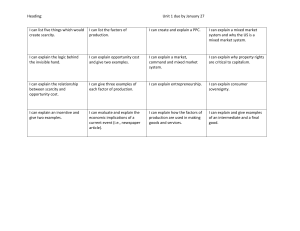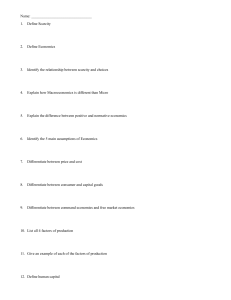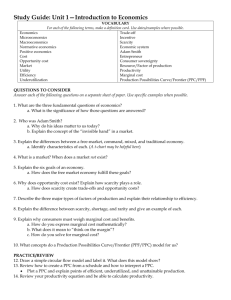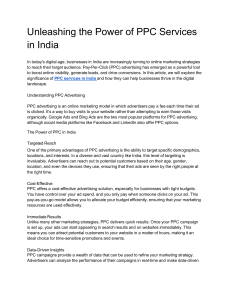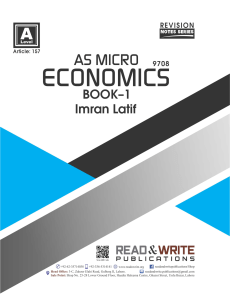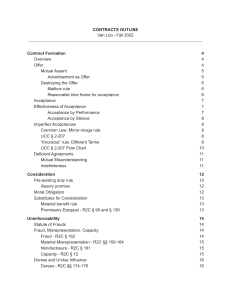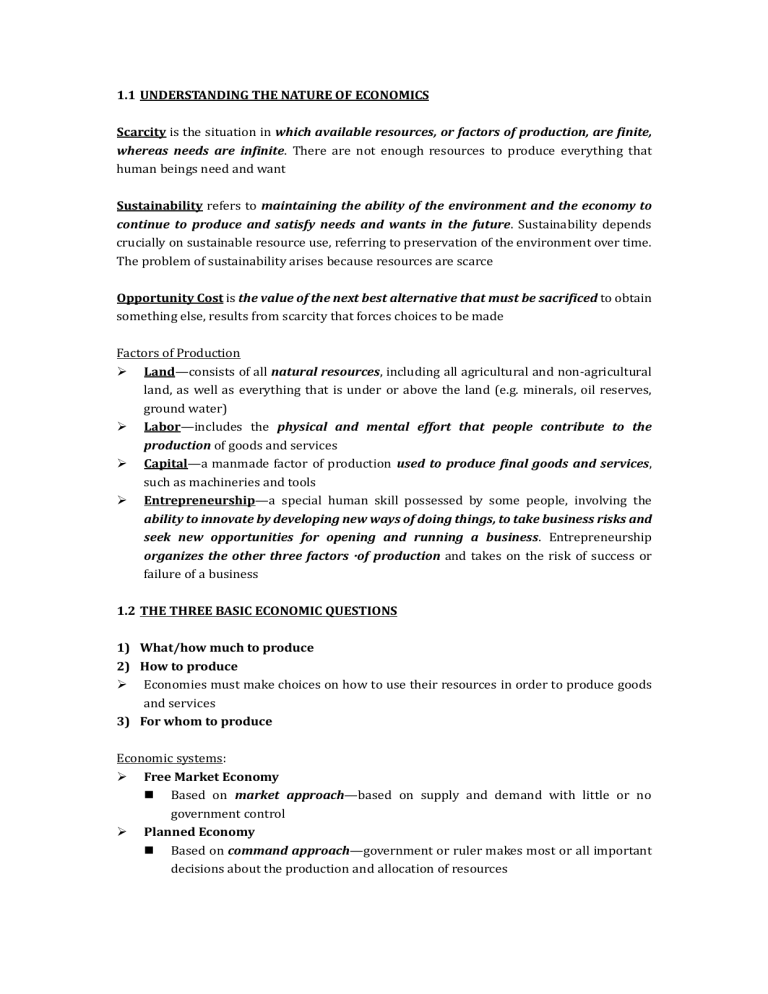
1.1 UNDERSTANDING THE NATURE OF ECONOMICS Scarcity is the situation in which available resources, or factors of production, are finite, whereas needs are infinite. There are not enough resources to produce everything that human beings need and want Sustainability refers to maintaining the ability of the environment and the economy to continue to produce and satisfy needs and wants in the future. Sustainability depends crucially on sustainable resource use, referring to preservation of the environment over time. The problem of sustainability arises because resources are scarce Opportunity Cost is the value of the next best alternative that must be sacrificed to obtain something else, results from scarcity that forces choices to be made Factors of Production Ø Land—consists of all natural resources, including all agricultural and non-agricultural land, as well as everything that is under or above the land (e.g. minerals, oil reserves, ground water) Ø Labor—includes the physical and mental effort that people contribute to the production of goods and services Ø Capital—a manmade factor of production used to produce final goods and services, such as machineries and tools Ø Entrepreneurship—a special human skill possessed by some people, involving the ability to innovate by developing new ways of doing things, to take business risks and seek new opportunities for opening and running a business. Entrepreneurship organizes the other three factors ·of production and takes on the risk of success or failure of a business 1.2 THE THREE BASIC ECONOMIC QUESTIONS 1) What/how much to produce 2) How to produce Ø Economies must make choices on how to use their resources in order to produce goods and services 3) For whom to produce Economic systems: Ø Free Market Economy n Based on market approach—based on supply and demand with little or no government control Ø Planned Economy n Based on command approach—government or ruler makes most or all important decisions about the production and allocation of resources Ø Mixed Economy n Combination—allows a level of economic freedom in the use of capital, but also allows governments to interfere in economic activities 1.3 UNDERSTANDING THE WORLD BY USE OF MODELS PPC represents all combinations of the maximum amounts of two goods that can be produced by an economy, given its resources and technology, when there is full employment of resources and efficiency in production To produce somewhere on the PPC, two conditions must be met: Ø All resources must be fully employed Ø All resources must be used efficiently Because of scarcity: Ø The economy cannot produce outside its PPC Ø The economy must make a choice about what particular combination of goods will be produced Ø Choices involve opportunity costs Shape of the PPC: Ø Specialization of factors of production, which makes them not equally suitable for the production of different goods and services Actual growth: Ø Reduction in unemployment Ø Increases in efficiency Growth in production possibilities: Ø Increases in quantity of resources Ø Improvements in quality of resources Ø Technological improvements Equality: the state of being equal with respect to something (being the same) Equity: being fair or just
